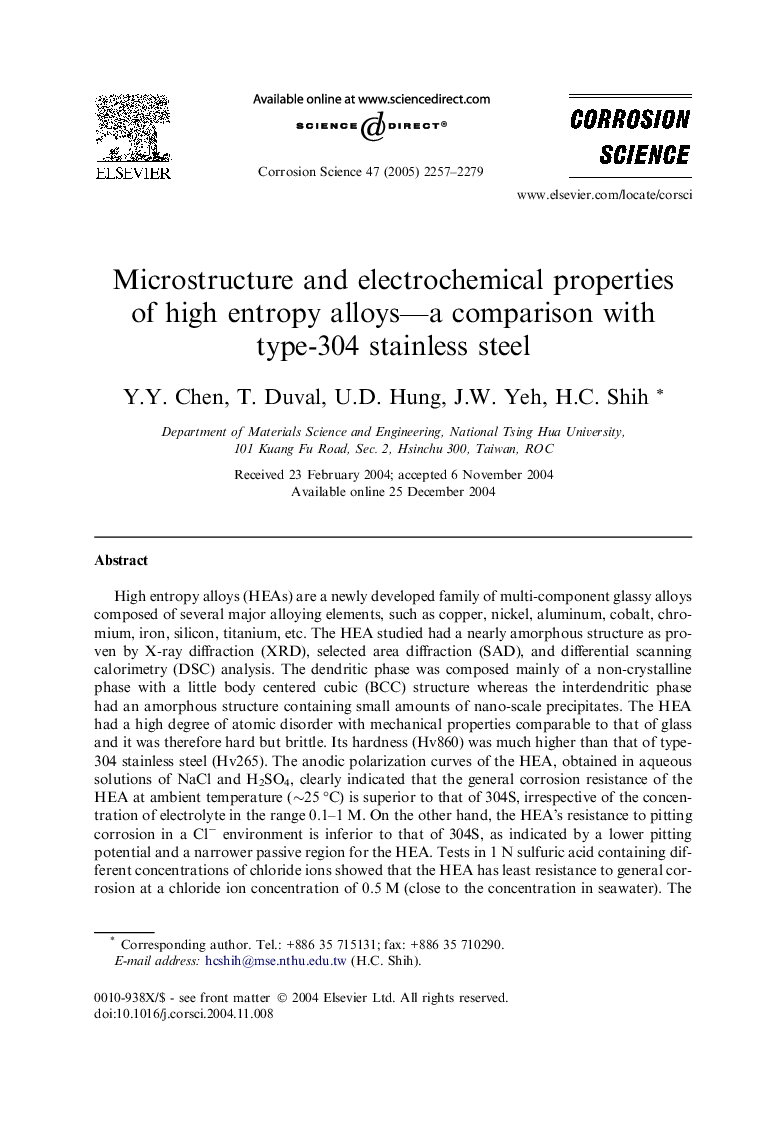| Article ID | Journal | Published Year | Pages | File Type |
|---|---|---|---|---|
| 1472340 | Corrosion Science | 2005 | 23 Pages |
High entropy alloys (HEAs) are a newly developed family of multi-component glassy alloys composed of several major alloying elements, such as copper, nickel, aluminum, cobalt, chromium, iron, silicon, titanium, etc. The HEA studied had a nearly amorphous structure as proven by X-ray diffraction (XRD), selected area diffraction (SAD), and differential scanning calorimetry (DSC) analysis. The dendritic phase was composed mainly of a non-crystalline phase with a little body centered cubic (BCC) structure whereas the interdendritic phase had an amorphous structure containing small amounts of nano-scale precipitates. The HEA had a high degree of atomic disorder with mechanical properties comparable to that of glass and it was therefore hard but brittle. Its hardness (Hv860) was much higher than that of type-304 stainless steel (Hv265). The anodic polarization curves of the HEA, obtained in aqueous solutions of NaCl and H2SO4, clearly indicated that the general corrosion resistance of the HEA at ambient temperature (∼25 °C) is superior to that of 304S, irrespective of the concentration of electrolyte in the range 0.1–1 M. On the other hand, the HEA’s resistance to pitting corrosion in a Cl− environment is inferior to that of 304S, as indicated by a lower pitting potential and a narrower passive region for the HEA. Tests in 1 N sulfuric acid containing different concentrations of chloride ions showed that the HEA has least resistance to general corrosion at a chloride ion concentration of 0.5 M (close to the concentration in seawater). The lack of hysteresis in cyclic polarization tests confirmed that the HEA—like 304S—is not susceptible to pitting corrosion in chloride-free 1 N H2SO4.
